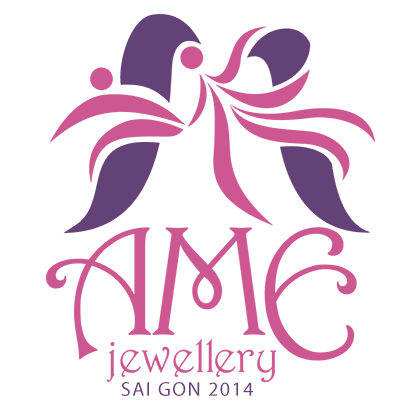AME Jewellery: A Commitment to Excellence
At AME Jewellery, our unwavering dedication to quality ensures that every piece meets international standards for gold jewelry fineness as established by the World Gold Council. When you wear AME Jewellery, you embrace a promise of luxury, purity, and enduring integrity.
The Story of Gold
Gold, treasured for its natural beauty and radiance, has held symbolic and cultural significance throughout history. Many civilizations regarded gold as a representation of the sun, its brilliance mirroring the celestial body.
The term "carat" (or "karat") originates from the Ceratonia siliqua tree, commonly known as the carob. Ancient traders used carob seeds as a weight standard for precious metals and gemstones. Over time, this measurement became standardized, with one carat equating to 0.2 grams. During the Roman Empire, the gold coin solidus, weighing 24 carob seeds, gave rise to the definition of 24-karat gold as 100% pure.
Understanding Gold Colours
Pure gold is naturally a warm, reddish-yellow hue. However, by alloying gold with other metals, its durability increases, and its color can change to create unique shades.
Common Gold Colours
-
Yellow Gold
- Remains the most popular choice for jewelry.
- Achieved by mixing gold with silver and copper.
-
White Gold
- Created by alloying gold with white metals such as palladium or silver.
- Often plated with rhodium for enhanced shine and hardness.
- A favorite for wedding bands in the United States.
-
Rose Gold
- Features a soft pink hue achieved by adding copper to gold.
- Once known as "Russian Gold" due to its popularity in 19th-century Russia.
- Favored in modern wedding rings, bracelets, and statement pieces.
-
Purple and Blue Gold
- Purple Gold: A gold-aluminum alloy (AuAl2), with around 79% gold content, making it 18-karat.
- Blue Gold: Formed by combining gold with indium or gallium. These alloys produce vibrant blue hues but have lower karat (AuIn2 11K and AuGa2 14K).

Ternary plot of different colors of Ag–Au–Cu alloys
Gold Purity and Caratage
Gold purity is expressed in carats (K) or fineness (parts per thousand).
- 24K Gold: Pure gold with no additional metals.
- 18K Gold: 75% gold, alloyed with 25% other metals like silver or copper.
Each country has its own minimum legal carat for gold:
- United States: 10K (minimum)
- UK, France, Austria, Portugal, Ireland: 9K (minimum)
- Denmark, Greece: 8K (minimum)
This chart shows some examples of the composition of various caratages of gold:
| Gold type | Karat |
Gold (Au) |
Silver (Ag) |
Copper (Cu) |
Zinc (Zn) |
Palladium (Pd) |
|---|---|---|---|---|---|---|
| Yellow | 9k | 37.5% | 42.50% | 20% | ||
| Yellow | 10k | 41.70% | 52% | 6.30% | ||
| Yellow | 14k | 58.30% | 30% | 11.70% | ||
| Yellow | 18k | 75% | 15% | 10% | ||
| Yellow | 22k | 91.70% | 5% | 2% | 1.30% | |
| White | 9k | 37.5% | 62.5% | |||
| White | 10k | 41.7% | 47.4% | 0.9% | 10% | |
| White | 14k | 58.30% | 32.20% | 9.50% | ||
| White | 18k | 75% | 25% (or Pt) | |||
| White | 22k | N/A | N/A | N/A | N/A | N/A |
| Rose | 9k | 37.5% | 20% | 42.5% | ||
| Rose | 10k | 41.70% | 20% | 38.3% | ||
| Rose | 14k | 58.30% | 9.2% | 32.5% | ||
| Rose | 18k | 75% | 9.2% | 22.2% | ||
| Rose | 22k | 91.7% | 8.40% |
At AME Jewellery, we utilize advanced XRF gold analysis to accurately measure and ensure the purity of gold in our jewelry, expressed in karats.
Gold Hallmarks
Gold hallmarks are official certifications stamped onto gold items. These marks provide essential information, including:
- Purity Mark: Indicates fineness or karat (e.g., 18K or .750).
- Assay Office Mark: Identifies the body certifying the purity.
- Manufacturer’s Mark: Identifies the jewelry maker.
- Date Letter (optional): Denotes the year the hallmark was applied.
Hallmarks enhance trust by certifying quality, ensuring legal compliance, and protecting consumers.
Fineness Markings
Jewelry is often stamped with a fineness mark indicating purity, such as:
- .375 = 9K
- .585 = 14K
- .750 = 18K
- .999 = 24K
Fineness Mark of palladium, platinum, gold, and silver.

AME Jewellery's pieces are stamped with the following hallmarks: AME 18K, AME 14K, or AME 10K for gold jewelry, and AME S925 for sterling silver jewelry.
Gold Weight: Measure and Standards
The weight of gold significantly impacts its value. Gold is primarily measured using troy ounces, a system designed for precious metals.
Common Units of Gold Weight
-
Troy Ounce
- 1 troy ounce = 31.1035 grams.
- The standard for global gold trading.
-
Gram
- Frequently used in jewelry retail.
- 1 gram = 0.03215 troy ounces.
-
Kilogram
- Common in bulk gold trading.
- 1 kilogram = 1000 grams = 32.1507 troy ounces.
-
Pennyweight (dwt)
- Traditional North American measure.
- 1 pennyweight = 1/20 of a troy ounce = 1.555 grams.
-
Tael
- Used in Asian markets.
- 1 tael ≈ 37.429 grams (varies slightly by region).
Source:




